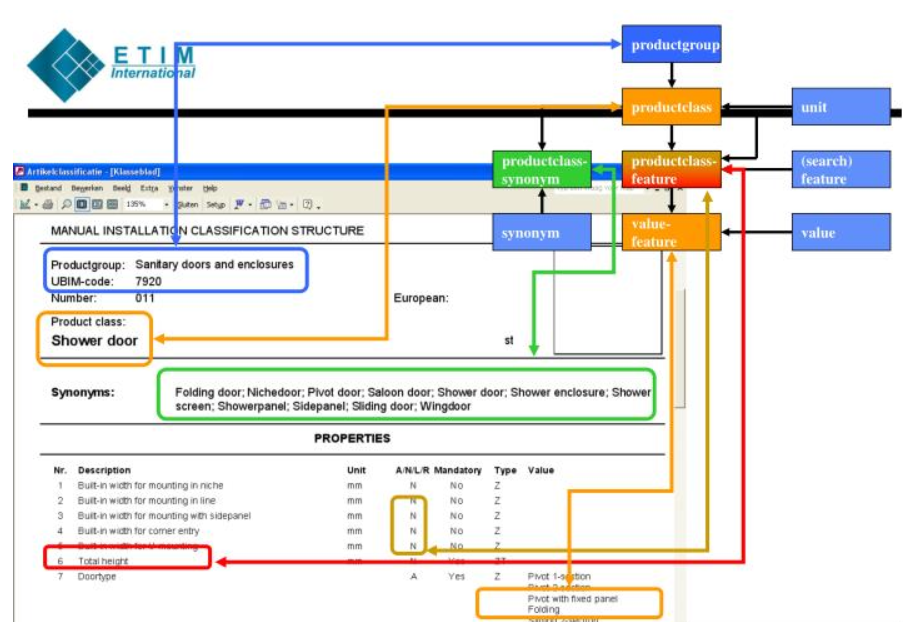5 Ultimate Reasons Why To Adopt The ETIM Classification
ETIM International is a global organization that created the ETIM classification which is a universal standard for the industrial sector. The ETIM classification standard primary goal is to simplify the product data exchange process from manufacturers to wholesalers and create a generally accepted classification for transmitting product information.
Nowadays, the ETIM classification is integrated into 19 European & North American countries and extended to the various industrial markets as:
- HVAC (Heating, ventilation, and air conditioning).
- Plumbing.
- Building.
- Sanitary and other related sectors.
ETIM Classification Overview
The ETIM (European Technical Information Model) classification standard operates with the following categories:
- Product groups. The main purpose of the group is to set up an order for the product classes and their features.
- Product classes. This category describes similar products and specifies the technical characteristics of the products in the class.
- Synonyms (Keywords). This category means an alternative name for a product class and a reference to several product classes is possible. A product class can have several synonyms that are not related to each other.
- Features. This category is clearly described by description, feature type, unit, and value. There are some feature types like alphanumeric (color, material,…), logic (“Yes/No” questions), numeric (length, voltage,…), range values.
- Values. In this category, free text entry is forbidden to keep data consistency. However, there are more than 7.5 K values available in ETIM built-in list.
- Units. Numerical and range features always need a unit of measurement which defines what value is expected. There is only one exception to features like “number of” which do not need a unit.

Source: ETIM International Classification Guidelines, 2019.
Product information structure example according to ETIM Classification
- Product groups. Sanitary doors and enclosures.
- Product classes. Shower door.
- Synonyms (Keywords). Folding door; Nichedoor; Pivot door; Shower enclosure; Shower screen; Shower panel.
- Features. Total height.
- Values. Pivot with a fixed panel.
- Units. 1 item.

Source: ETIM International.
5 Reasons Why ETIM Industrial Classification Will Increase Your Efficiency
1. Covers industrial markets.
Electronics, Installation, and Construction sectors are the most complicated ones in terms of data interchange flow. International manufacturers have their vision for presenting technological product information to their distributors and sometimes it can differ significantly from one another. Thus, wholesalers face difficulties with obtaining precise product information and data losses frequently happen. Fixing mistakes takes time and creates delays in the supply chain. ETIM classification serves as a single source of truth and offers a common structure for data transfer.
2. Stands as an international model.
ETIM classification is an open-source model and is used in such countries as Austria, Belgium, Denmark, Finland, France, Germany, Italy, Lithuania, Netherlands, North America, Norway, Poland, Portugal, Slovakia, Slovenia, Spain, UK, Sweden, and Switzerland. Moreover, ETIM International understands the crucial importance of uniform requirements for product data transfer. That’s why the organization actively participates in several global standardization initiatives to increase the number of countries adopting ETIM classification. For manufacturers, it means an ability to easily push their goods to worldwide points of sales without the hassle of product information adjustment per each retailer’s requirements.
3. Supports a multilingual format.
As the ETIM classification is composed of unique identifiers for groups, classes, features, and units, it enables to be multilingual and provides automatic translations. There are 17 languages available thanks to a custom-built classification management tool (CMT) that has access to the international multilingual ETIM master database. Multiple languages may be considered as one of the most important advantages of the ETIM classification as you do not need to attract third-party agencies to make translations so far.
4. Adapts to countries’ specifics.
Each country can apply more specified data formats in case of necessity. This is often done to serve the specific needs of users or more general software applications. The ETIM CMT database supports various export formats for example TXT, CSV, ACCDB, XLS. Besides, it delivers useful analyses & reporting in all countries. You may also add pictures, videos to make the product presentation more attractive and helpful.
5. Optimizes eCommerce performance.
Using the ETIM classification, you obtain an international well-defined structure and this increases your operational efficiency. You can get rid of the product data supply chain chaos and focus on developing high-qualified products instead of editing the Excel spreadsheets for your wholesalers. There is no need for manual filling the information as it is already electronically available in ETIM format. One more important thing to mention is that the ETIM data pool is a SAAS (Software as a Service) application, which means you don’t need to install any additional software, but only to use any web browser.
Gepard as a Bridge Between Brands’ Content & Ecommerce Shops
We want to emphasize that ETIM is not a 100% ready-to-use product that can send your product data to retailers, but a generally accepted standard to manage your product content. After adopting the ETIM classification you still need to think about how you are going to deliver product information to omnichannel sales points.
Contact us to find out how to structure your product data according to the ETIM classification. We are also here to help with automated data transfer in ETIM format to online shops.


